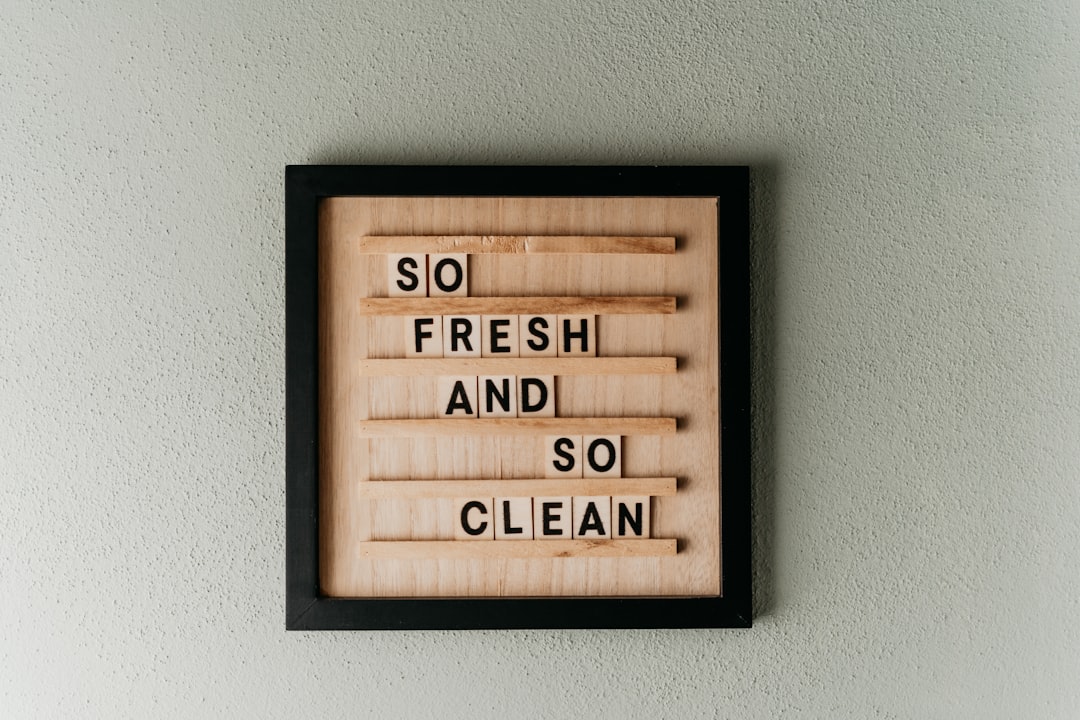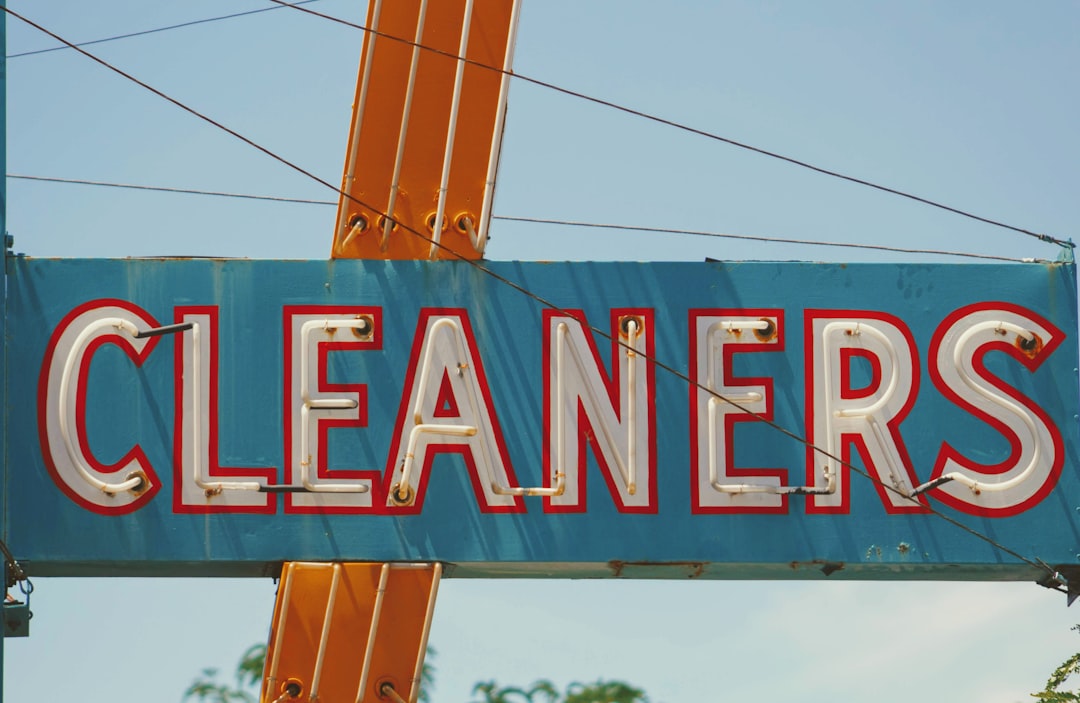

Engage prospects with a scan and streamline customer engagement with FREE QR code marketing tools by Sona – no strings attached!
Create a Free QR CodeFree consultation

No commitment

Engage prospects with a scan and streamline customer engagement with FREE QR code marketing tools by Sona – no strings attached!
Create a Free QR CodeFree consultation

No commitment
QR codes have evolved from a novelty to a strategic powerhouse in bridging offline engagement with online action. For self-service dry cleaning businesses, QR codes represent a user-friendly, frictionless, and highly effective way to boost conversions without requiring an app download or complex setup. As customer expectations shift toward convenience, automation, and mobile-first experiences, self-service models must evolve to meet the demand for instant access and seamless service at every touchpoint.
For many operators, traditional dry cleaning processes introduce persistent challenges. Manual sign-ups obscure true customer intent, the absence of digital tracking leaves anonymous foot traffic unrecognized, and order status updates go unclaimed. These frustrations are compounded when high-value prospects pass through physical locations but fail to convert because interactions are neither measurable nor actionable. QR codes provide a solution by converting offline customer journeys into digital signals businesses can act on, improving Sona’s offline attribution.
This guide delivers practical strategies, best practices, and real-world examples designed for marketing leaders, operations specialists, and self-service dry cleaning business owners eager to grow through data-driven, scalable engagement. By addressing industry pain points such as missed high-fit leads, lack of actionable analytics, and inefficient post-service follow-up, we show how QR codes fuel business transformation in increasingly competitive markets.

QR codes bridge the gap between physical touchpoints and digital outcomes, making it easier to achieve goals like increased customer sign-ups, faster order processing, and greater engagement for self-service dry cleaning operators. A persistent frustration in the industry is losing high-value prospects who interact anonymously with kiosks or signage and are never tracked or nurtured further. This lack of visibility often leads to untapped revenue and missed opportunities to drive repeat business.
The key is to replace analog friction with digital simplicity, then measure each interaction. Think about what is still on paper inside your environment, such as sign-up forms, drop-off instruction sheets, loyalty enrollment cards, or dated rack signage. Every analog asset is an opportunity to add a QR code and turn a passive impression into a measurable micro-conversion, such as a sign-up, payment, or feedback submission.
Here is how to do it effectively:
Businesses that once struggled to follow up with high-intent customers, such as those who paused at a kiosk but never created an account, discover that QR campaigns surface these leads for personalized retargeting. Dynamic QR codes also let you update promotions without reprinting signage or bag tags, so offers stay aligned to demand and seasonality.
By connecting scan activity to real-time CRM updates, self-service dry cleaning operators can capture each moment of intent and turn it into segmented, high-ROI marketing and operational automation. Sona QR supports this end-to-end approach, from code creation and management to analytics and CRM sync, so teams can move quickly and prove impact.

Self-service dry cleaning struggles with traceability and speed. Anonymous foot traffic flows through kiosks and lockers daily, yet only a fraction converts to known customers. Manual processes slow down order initiation, payments, or loyalty enrollment, and follow-up often falls through the cracks. Without a digital bridge, in-store intent rarely turns into actionable data, and improving account identification becomes critical.
QR codes solve these pain points by turning every surface into a digital trigger. Order bags become review channels, locker doors become payment portals, and appointment cards become loyalty enrollment links. Scans replace manual steps, reduce friction, and attribute activity to specific placements that you can improve over time.
For self-service operators, this means your physical footprint begins to function like a digital marketing engine. Each touchpoint delivers engagement, measurable data, and automation opportunities that elevate both customer experience and profitability.
The best QR format depends on the action you want to encourage and where the code will live. In self-service environments, the most effective campaigns drive account creation, payment, updates, or feedback using the shortest possible path. Choose formats that minimize friction and maximize measurability.
Dynamic QR codes are especially important in this vertical because signage and hardware are long-lived. You do not want to reprint every time you change an offer, payment gateway, or landing page. With dynamic codes, you edit the destination in software, keep historical analytics, and preserve attribution to that specific locker door, kiosk, or flyer.
With Sona QR, operators can create and manage all these formats in one place, switch destinations without reprints, and keep analytics tied to each specific asset for accurate attribution.

Your footprint is full of latent demand. Kiosks handle heavy traffic, locker doors are seen by every pickup customer, and order bags go home with users who might refer friends if prompted. QR codes give you the tools to turn these routine moments into predictable growth.
Start by assessing high-visibility surfaces and high-friction steps. Then assign a conversion goal to each placement, such as Scan to join rewards on receipts or Scan to pay now on locker doors. Treatment of each location matters, since a code near a payment step should not send to a general homepage.
Over time, analyze scans by placement, time of day, and customer type. Reallocate budget to the assets and messages that outperform, and retire the ones that do not produce measurable value.

Every part of the customer journey offers an opportunity to remove friction and add attribution. Self-service operators often lose momentum between steps, such as a customer dropping off without creating an account, or paying in cash without joining loyalty. QR codes stitch these gaps together while giving you first-party data you can use later.
The most effective use cases align with common interactions on-site and at home. Focus on high-intent micro-moments where a small nudge leads to a meaningful action, such as a payment, a signup, or a review.
By syncing these scan events to your CRM or POS, you retain visibility when customers pause or stop. You can trigger reminders for incomplete orders, deliver incentives for the next visit, and identify promoters for referral programs.
Each scan is a signal: what someone wanted, where they were, and what time they acted. When you deploy unique QR codes for different touchpoints, you can use these signals to personalize follow-up and increase conversions. The result is better timing, better messaging, and better ROI compared to one-size-fits-all outreach. For campaigns, see Sona’s Playbook intent-driven retargeting.
In self-service dry cleaning, audience distinctions often include first-time visitors versus returning customers, coupon-driven users versus loyalty members, and late-night kiosk users versus daytime shoppers. Segmenting based on these dimensions helps you send the right message at the right moment.
With Sona QR, every code becomes a smart capture point that feeds your data warehouse and marketing tools. You get a living audience graph that reflects intent in real time and helps you prioritize the highest-probability opportunities.
QR codes are the connective tissue between your offline assets and your digital funnels. When added to the campaigns you already run, codes turn static impressions into measurable interactions and let you respond in real time. This is especially powerful for self-service environments where staff interaction is limited and automation must carry more of the load.
To integrate effectively, plan how a scan transitions into the next best action. A kiosk sign should drive to a mobile-optimized payment page. A direct mailer should prefill a first-order discount. A social video should lead to a pickup scheduling flow. Keep the destination aligned to the context of the scan.
Centralized code management with Sona QR keeps all these deployments organized, tracks performance, and syncs data with your CRM so you can close the loop from scan to revenue.
Strong execution turns a smart idea into measurable results. Use this checklist to move from concept to live deployment without guesswork, and to lay a foundation for ongoing optimization in your self-service dry cleaning operation.
Start with a single, high-impact goal. For many operators, enabling 24/7 order placement at unattended kiosks is the fastest path to value. Others begin with Scan to pay now at lockers to speed pickup lines and capture first-party data with each transaction.
Define the outcome and how you will measure success. For example, target a 30 percent increase in scan-to-signup rate or a 20 percent reduction in abandoned orders after launching Scan to start order at kiosks.
Select dynamic QR codes for any campaign where tracking, destination changes, and A/B testing matter. Static codes are fine for permanent, non-trackable destinations such as a PDF of your stain guide, but they will not support attribution or on-the-fly updates.
Use dynamic codes for payment flows, loyalty enrollment, promotions, and feedback collection. They preserve analytics while giving you the flexibility to refine destination content without reprinting.
Design for clarity. Surround the code with a visible frame, add your logo, and use a short, benefit-led call-to-action like Scan to pay in 10 seconds. Ensure sufficient contrast and size for the expected scanning distance, especially on locker doors and outdoor signage.
Test scans on multiple devices and lighting conditions. Validate that the landing page is mobile-first, loads quickly on cellular networks, and minimizes form fields. A poor landing experience can neutralize even the best placement.
Roll out codes where the payoff will be immediate. Prioritize high-traffic kiosks, locker doors with frequent pickups, checkout counters, and order bags that go home with customers. For neighborhoods you want to penetrate, place direct mail with unique codes that route to a tailored onboarding offer.
Map each placement to a contextually relevant destination. For example, a code at the POS should send to Save your digital receipt or Join rewards in seconds, not a generic homepage.
Monitor scans, conversion rates, and drop-off points in your analytics dashboard. Compare performance by placement, daypart, and CTA variations. Identify underperforming assets and test new copy, offers, or destinations.
Close the loop by syncing scan events to your CRM or POS. Trigger follow-up flows for incomplete actions, such as a reminder to finish account setup or a coupon for a second order. Over time, let data guide budget and creative decisions across the entire footprint.
Structured execution like this replaces inconsistent data capture and missed follow-ups with a repeatable, measurable system for growth. As performance improves, scale the playbook to new locations, partners, and media.
Many teams historically struggled to prove how physical interactions influenced revenue. Without a way to connect a locker-door poster to a signup or a payment, operators defaulted to intuition. QR analytics change this. When every scan and subsequent action is tracked, you can attribute outcomes to the exact asset and message that drove them.
A strong analytics stack gives you more than scan counts. You want context: where the scan happened, what device was used, which creative won the A/B test, and what downstream conversions followed. With these insights, you direct spend to your best performers and resolve bottlenecks quickly.
Sona QR captures real-world engagement at the scan level. Sona.com turns that engagement into revenue-connected insight, so you can position QR as a high-performing channel within your broader marketing mix.
Scaling QR success is about precision, not volume. Unique codes, clear attribution, and automated follow-up transform scans into conversions you can count on. The more intentional your placements and destinations, the higher your return.
Avoid handing customers a code without clarifying what they will get. Benefit-led CTAs drive adoption, especially for customers who are new to scanning. Train your team to point out QR-enabled options, and reinforce the payoff such as faster pickup, instant rewards, or contactless payment.
You can start creating QR codes for free with Sona QR. Most teams launch in minutes and see immediate gains in data quality and conversion consistency.

Operators that align QR strategy to real customer moments see noticeable lifts in conversion and retention. The examples below illustrate how thoughtful placement and clear CTAs create measurable results without overhauling hardware or staffing models.
A common thread in each success story is the use of dynamic codes, mobile-first destinations, and CRM-integrated follow-up. Together, these elements ensure that scans do not stall at the landing page and that performance improves over time.
These examples highlight the versatility of QR in self-service environments. The right message at the right moment can convert anonymous traffic into lasting relationships.
Most QR shortcomings stem from misalignment rather than technology. A code that sends a payment-ready customer to a generic homepage will underperform. A code placed too small, too low, or without a clear benefit will be ignored. Success comes from context-aware CTAs, scannable design, and destinations that complete the task in as few taps as possible.
Treat QR as a product, not a print garnish. Test layouts as you would a webpage. Validate scannability in sunlight, low light, and from different angles. Role-play the journey: if you were in a hurry at a kiosk, would you know what to do and get it done fast?
By addressing these operational realities upfront, you increase scan rates, improve completion rates, and protect trust, which together compound into durable growth.
QR codes are more than shortcuts. They are a strategy for turning every physical surface into a digital entry point and every moment of interest into a measurable action. For self-service dry cleaning, they close the loop between lockers, kiosks, and order bags on one side, and payments, loyalty, and reviews on the other.
Here is what you gain when you deploy QR with intention:
With Sona QR, you have everything needed to capture demand at the source and convert it into results you can prove. Generate your first codes for free, manage them centrally, and connect scan data to Sona for attribution that links offline moments to online revenue.
QR codes have revolutionized self-service dry cleaning by transforming routine drop-offs into seamless, data-driven customer journeys. They empower operators to attract new customers, enhance convenience through contactless interactions, and gain actionable insights that optimize service and boost repeat business. Imagine instantly knowing which promotions lead to increased orders or how customers engage with care instructions—all in real time.
With Sona QR, you can create dynamic, trackable QR codes tailored for self-service dry cleaning that update instantly without costly reprints. Every scan links directly to customer behavior and revenue, enabling smarter marketing decisions and personalized experiences that keep customers coming back. No opportunity is left behind.
Start for free with Sona QR today and turn every QR scan into a loyal customer, a valuable insight, or your next conversion.
Self-service dry cleaning offers customers convenience, speed, and automation by enabling instant access to order placement, payment, and loyalty enrollment without the need for app downloads or manual processes.
QR codes on kiosks allow customers to scan and instantly access mobile-optimized forms for order placement, payment, and status updates, reducing friction and abandonment while capturing actionable data.
The article does not specify startup costs for a self-service dry cleaning business.
Key technologies include dynamic QR codes for tracking and updates, mobile-optimized landing pages for order and payment processing, CRM integration for data capture, and a QR code management platform like Sona QR.
Integrate QR codes by placing them on kiosks, locker doors, order bags, receipts, and direct mail with clear, benefit-led calls-to-action that lead to relevant mobile experiences such as payments, loyalty enrollment, and feedback collection.
Dynamic QR codes allow you to update destinations without reprinting materials, track scan analytics, conduct A/B testing, and maintain attribution tied to specific locations or campaigns, maximizing flexibility and ROI.
Common use cases include order placement and payment, loyalty program enrollment, customer feedback and reviews, and providing support or contact details, all aimed at reducing friction and increasing measurable engagement.
Each scan captures intent signals that can be segmented by customer type, location, and behavior, enabling personalized retargeting campaigns, automated follow-ups, and integration with CRM and advertising platforms for improved conversion.
Design QR codes with visible frames, logos, short benefit-focused calls-to-action, sufficient size and contrast for scanning, and ensure mobile-first landing pages that load quickly and minimize form fields.
QR codes provide detailed scan data including time, location, device, and related conversions, enabling attribution of revenue to specific assets, real-time campaign adjustments, and integration with CRM and POS systems for comprehensive insights.
Use Sona QR's trackable codes to improve customer acquisition and engagement today.
Create Your FREE Trackable QR Code in SecondsJoin results-focused teams combining Sona Platform automation with advanced Google Ads strategies to scale lead generation

Connect your existing CRM

Free Account Enrichment

No setup fees
No commitment required

Free consultation

Get a custom Google Ads roadmap for your business






Launch campaigns that generate qualified leads in 30 days or less.
